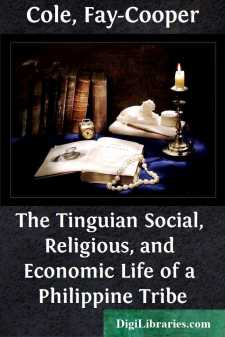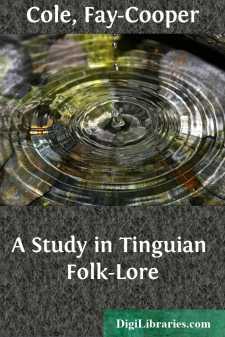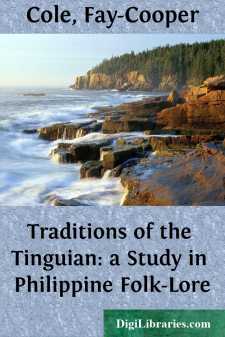Categories
- Antiques & Collectibles 13
- Architecture 36
- Art 48
- Bibles 22
- Biography & Autobiography 813
- Body, Mind & Spirit 142
- Business & Economics 28
- Children's Books 14
- Children's Fiction 11
- Computers 4
- Cooking 94
- Crafts & Hobbies 4
- Drama 346
- Education 46
- Family & Relationships 57
- Fiction 11829
- Games 19
- Gardening 17
- Health & Fitness 34
- History 1377
- House & Home 1
- Humor 147
- Juvenile Fiction 1873
- Juvenile Nonfiction 202
- Language Arts & Disciplines 88
- Law 16
- Literary Collections 686
- Literary Criticism 179
- Mathematics 13
- Medical 41
- Music 40
- Nature 179
- Non-Classifiable 1768
- Performing Arts 7
- Periodicals 1453
- Philosophy 64
- Photography 2
- Poetry 896
- Political Science 203
- Psychology 42
- Reference 154
- Religion 513
- Science 126
- Self-Help 84
- Social Science 81
- Sports & Recreation 34
- Study Aids 3
- Technology & Engineering 59
- Transportation 23
- Travel 463
- True Crime 29
The Tinguian Social, Religious, and Economic Life of a Philippine Tribe
by: Fay-Cooper Cole
Description:
Excerpt
Introduction
It seems desirable, at the outset, to set forth certain general conclusions regarding the Tinguian and their neighbors. Probably no pagan tribe of the Philippines has received more frequent notice in literature, or has been the subject of more theories regarding its origin, despite the fact that information concerning it has been exceedingly scanty, and careful observations on the language and physical types have been totally lacking.
According to various writers, these people are descended from Chinese, Japanese, or Arabs; are typical Malay; are identical with the Igorot; are pacific, hospitable, and industrious; are inveterate head-hunters, inhospitable, lazy, and dirty. The detailed discussion of these assertions will follow later in the volume, but at this point I wish to state briefly the racial and cultural situation, as I believe it to exist in northwestern Luzon.
I am under the impression that at one time this whole region was inhabited by pygmy blacks, known as Aeta or Negrito, small groups of whom still retain their identity. With the coming of an alien people they were pressed back from the coasts to the less hospitable regions of the interior, where they were, for the most part, exterminated, but they intermarried with the invaders to such an extent that to-day there is no tribe or group in northwestern Luzon but shows evidence of intermixture with them. I believe that the newcomers were drawn from the so-called primitive Malay peoples of southeastern Asia; that in their movement eastward and northward they met with and absorbed remnants of an earlier migration made up of a people closely related to the Polynesians, and that the results of this intermixture are still evident, not only in Luzon, but in every part of the Archipelago.
In northern Luzon, I hold, we find evidences of at least two series of waves and periods of migration, the members of which are similar physical type and language. It appears, however, that they came from somewhat different localities of southeastern Asia and had, in their old homes, developed social organizations and other elements of culture radically different from one another—institutions and groupings which they brought with them to the Philippines, and which they have maintained up to the present time.
To the first series belong the Igorot
with their institutions of trial marriage; division of their settlements into social and political units known asato; separate dormitories for unmarried men and women; government by the federated divisions of a village as represented by the old men; and a peculiar and characteristic type of dwelling.In the second wave series we find the Apayo, the western division at least of the people known as Kalinga, the Tinguian, and Ilocano. In none of these groups do we find the institutions just mentioned. Trial unions are unknown, and marriage restrictions are based solely on blood relationship; government is through the headman aided by the elders of his village, or is a pure democracy....





